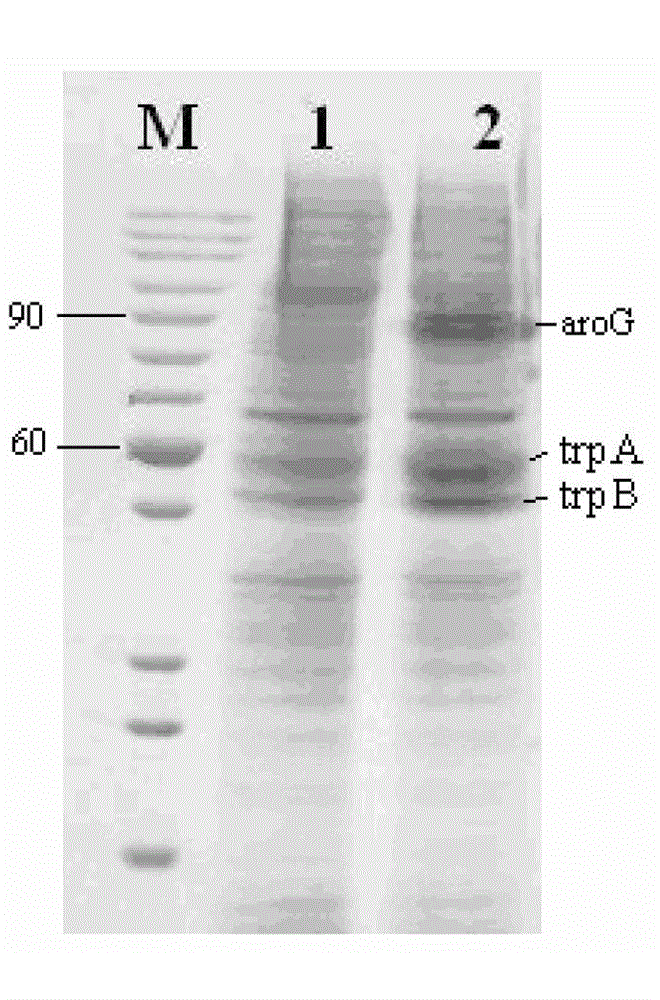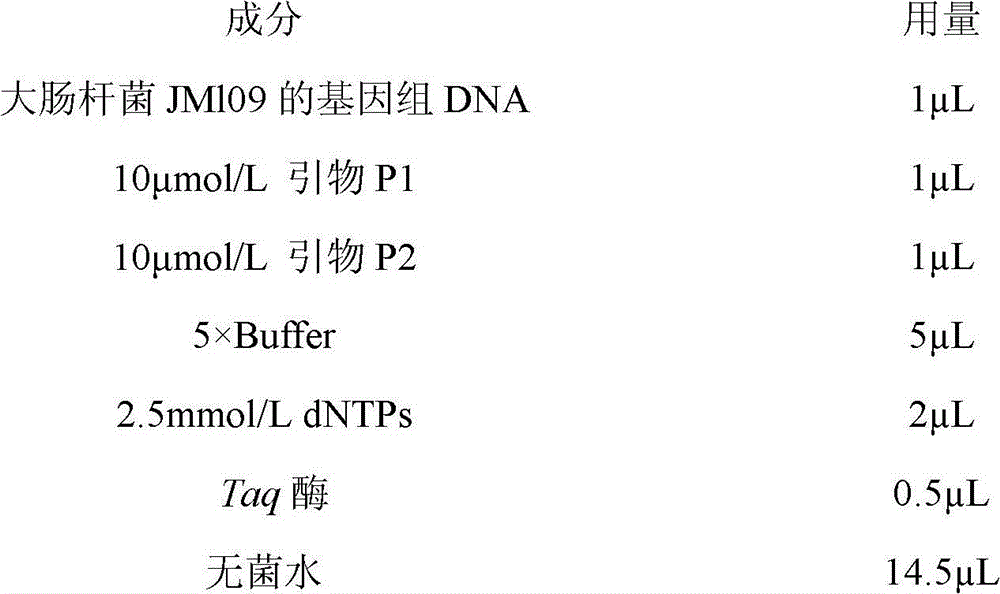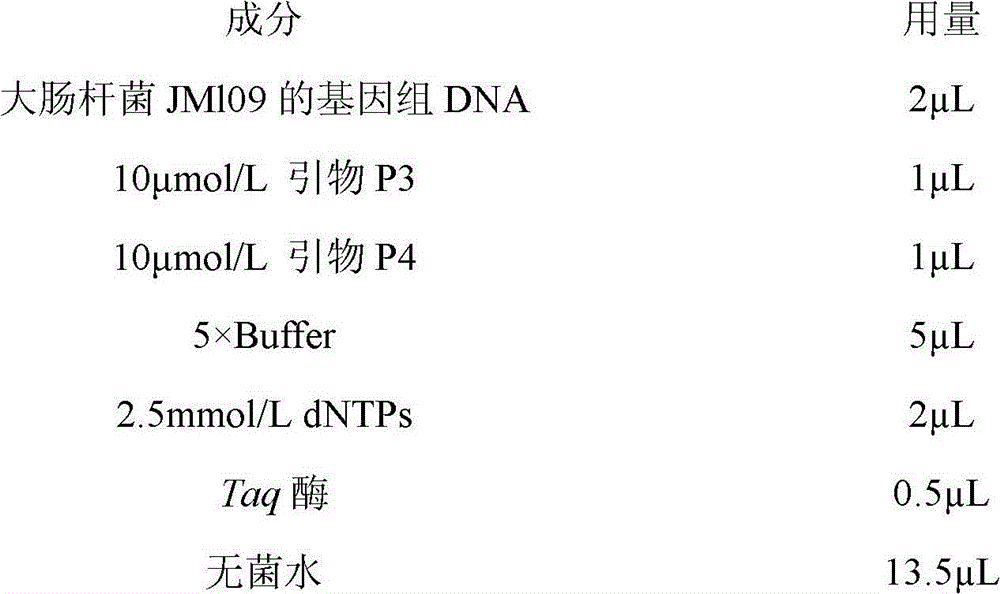Method for building gene engineering strains of producing tryptophan
The technology of a genetically engineered strain and a construction method is applied in the construction field of tryptophan-producing genetically engineered strains, and can solve the problems of high cost, low tryptophan yield and the like
- Summary
- Abstract
- Description
- Claims
- Application Information
AI Technical Summary
Problems solved by technology
Method used
Image
Examples
specific Embodiment approach 1
[0012] Specific embodiment one: the construction method of the tryptophan-producing genetically engineered strain of the present embodiment is carried out according to the following steps:
[0013] One, extract the genomic DNA of Escherichia coli JM109 with the bacterial genome extraction kit; Two, use Escherichia coli JM109 genomic DNA as template, carry out PCR amplification with P1, P2 as primer, use 1% agarose coagulation with PCR amplification product A Gel electrophoresis detection, and then use the gel recovery kit to purify to obtain the target gene aroG; 3. Connect the target gene aroG to the pMD18-T vector to construct the recombinant vector pMD18-T-aroG; 4. Use Escherichia coli JM109 genomic DNA as the Template, using P3 and P4 as primers for PCR amplification, PCR amplification product B is detected by 1% agarose gel electrophoresis, and then purified by using a gel recovery kit to obtain the target gene trpBA; 5. Combine the target gene trpBA with The pMD18-T vect...
specific Embodiment approach 2
[0021] Embodiment 2: This embodiment differs from Embodiment 1 in that the primer P1 used in the PCR amplification in step 2 is 5′-CGGAATTCCATCTCTCTCTAGA-3′, and the primer P2 is 5′-CGGGATCCACGTCATTCGTTT-3′. Others are the same as in the first embodiment.
[0022] Primers were designed according to the aroG gene sequence published by NCBI, and appropriate restriction sites EcoRI, BamH I and protective bases were added at both ends.
specific Embodiment approach 3
[0023] Embodiment 3: The difference between this embodiment and Embodiment 1 or 2 is that the primer P3 used for PCR amplification in step 4 is 5′-CGGAATTCTTTTCTTACCCCGGT-3′, and the primer P4 is 5′-CGGGATCCCGCTTGGCAACGTT-3′. Others are the same as in the first or second embodiment.
[0024] Primers were designed according to the trpBA gene sequence published by NCBI, and appropriate restriction sites EcoRI, BamH I and protective bases were added at both ends.
PUM
 Login to View More
Login to View More Abstract
Description
Claims
Application Information
 Login to View More
Login to View More - R&D
- Intellectual Property
- Life Sciences
- Materials
- Tech Scout
- Unparalleled Data Quality
- Higher Quality Content
- 60% Fewer Hallucinations
Browse by: Latest US Patents, China's latest patents, Technical Efficacy Thesaurus, Application Domain, Technology Topic, Popular Technical Reports.
© 2025 PatSnap. All rights reserved.Legal|Privacy policy|Modern Slavery Act Transparency Statement|Sitemap|About US| Contact US: help@patsnap.com



